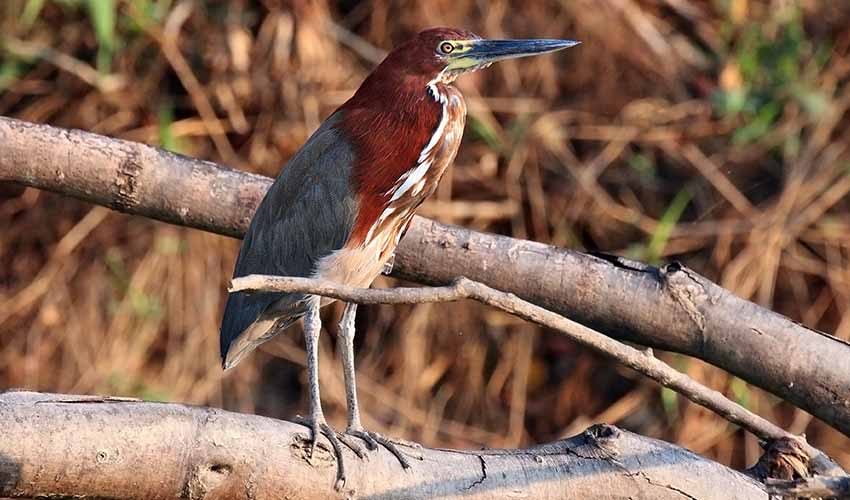A shy but striking bird that lives in the wetlands, riversides, and swampy forests of Central and South America. With its deep chestnut-red neck, bold striped pattern, and slow, deliberate movements, it looks like a mix between a tiger and a heron—which is exactly how it got its name! It’s one of the most beautiful and secretive herons out there, often seen alone, standing motionless like a statue near the water’s edge.
One of the most distinctive features of this heron is its tiger-like striping on the neck and chest. While young birds are more heavily barred and brownish, adults sport a sleek, reddish neck and a finely streaked black-and-white chest. When seen up close, its piercing yellow eyes and long, sharp bill give it a powerful, almost prehistoric look. This bird is built for stealth—it moves slowly and patiently, stalking its prey with perfect balance before delivering a lightning-fast jab to catch fish, frogs, insects, and even crustaceans.
Unlike the more social herons and egrets, the Rufescent Tiger Heron is mostly solitary. It prefers peace and quiet, making its home in dense, overgrown habitats where it’s hard to spot. In fact, birdwatchers often hear its call—a deep, low “grrk” or booming growl—before ever seeing it. This unusual, gruff call adds to its secretive vibe and has earned it nicknames like the “ghost of the marsh.”
Despite being a large bird, it’s incredibly good at blending into its surroundings. When it senses danger, it doesn’t fly away right away—instead, it freezes, stretches its neck upward, and relies on its striped plumage to blend into the vertical lines of tree trunks or reeds. It’s the heron version of a disappearing act!
Distribution
 Argentina
Argentina Belize
Belize Bolivia
Bolivia Brazil
Brazil Colombia
Colombia Costa Rica
Costa Rica Ecuador
Ecuador French Guiana
French Guiana Guatemala
Guatemala Guyana
Guyana Honduras
Honduras Nicaragua
Nicaragua Panama
Panama Paraguay
Paraguay Peru
Peru Suriname
Suriname Trinidad & Tobago
Trinidad & Tobago Uruguay
Uruguay Venezuela
VenezuelaAnything we've missed?
Help us improve this page by suggesting edits. Glory never dies!
Suggest an editGet to know me
Terrestrial / Aquatic
Altricial / Precocial
Polygamous / Monogamous
Dimorphic (size) / Monomorphic
Active: Diurnal / Nocturnal
Social behavior: Solitary / Pack / Herd
Diet: Carnivore / Herbivore / Omnivore / Piscivorous / Insectivore
Migratory: Yes / No
Domesticated: Yes / No
Dangerous: Yes / No




